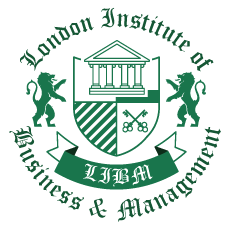Kieran Graham
Read More
Very professional courses. Great Administration assistance and high quality e-learning service.
Sarah Jennings
Read More
I did forex trading diploma. Very professional and detailed course.
Jordan Cooke
Read More
The course offered is excellent. I am glad to have taken it.














Abuse is when someone does or says something which harms you and makes you upset and scared. It is always unacceptable; everyone has a right to be treated with dignity and respect. No-one has the right to abuse you.
Abuse can be a single one-off act or something that happens over weeks, months or years. It can be accidental or deliberate. Just because there is no injury does not mean there is no abuse.
Abuse can happen in lots of different ways. Abuse and neglect can be defined in many ways and there can be no exhaustive list, however the most recent guidance from the Government identifies the following types of abuse and neglect:
Types of Abuse:
Physical abuse
Physical abuse includes assault, hitting, slapping, pushing, kicking, misuse of medication, being locked in a room, inappropriate sanctions or force-feeding, inappropriate methods of restraint, and unlawfully depriving a person of their liberty.
Possible indicators:
Psychological abuse
Psychological abuse includes ’emotional abuse’ and takes the form of threats of harm or abandonment, deprivation of contact, humiliation, rejection, blaming, controlling, intimidation, coercion, indifference, harassment, verbal abuse (including shouting or swearing), cyberbullying, isolation or withdrawal from services or support networks.
Psychological abuse is the denial of a person’s human and civil rights including choice and opinion, privacy and dignity and being able to follow one’s own spiritual and cultural beliefs or sexual orientation.
It includes preventing the adult from using services that would otherwise support them and enhance their lives. It also includes the intentional and/or unintentional withholding of information (e.g. information not being available in different formats/languages etc.).
Possible indicators:
Financial or Material abuse
This includes theft, fraud, internet scamming, coercion in relation to an adult’s financial affairs or arrangements, including in connection with wills, property, inheritance or financial transactions, or the misuse or misappropriation of property, possessions or benefits.
Possible indicators
Sexual abuse
Sexual abuse including rape, indecent exposure, sexual harassment, inappropriate looking or touching, sexual teasing or innuendo, sexual photography, subjection to pornography or witnessing sexual acts, indecent exposure and sexual assault or sexual acts to which the adult has not consented or was pressured into consenting.
It includes penetration of any sort, incest and situations where the person causing harm touches the abused person’s body (e.g. breasts, buttocks, genital area), exposes his or her genitals (possibly encouraging the abused person to touch them) or coerces the abused person into participating in or looking at pornographic videos or photographs. Denial of a sexual life to consenting adults is also considered abusive practice
Any sexual relationship that develops between adults where one is in a position of trust, power or authority in relation to the other (e.g. day center worker/social worker/residential worker/health worker etc.) may also constitute sexual abuse (see section on position of trust).
Possible indicators
Sexual exploitation:
The sexual exploitation of adults with care and support needs involves exploitative situations, contexts and relationships where adults with care and support needs (or a third person or persons) receive ‘something’ (e.g. food, accommodation, drugs, alcohol, cigarettes, affection, gifts, money) as a result of performing sexual activities, and/or others performing sexual activities on them.
Sexual exploitation can occur using technology without the person’s immediate recognition. This can include being persuaded to post sexual images or videos on the internet or a mobile phone with no immediate payment or gain or being sent such an image by the person alleged to be causing harm. In all cases those exploiting the adult have power over them by virtue of their age, gender, intellect, physical strength, and/or economic or other resources.
Neglect & Acts of Omission
These include ignoring medical, emotional or physical care needs, failure to provide access to appropriate health, social care or educational services, and the withholding of the necessities of life such as medication, adequate nutrition and heating. Neglect also includes a failure to intervene in situations that are dangerous to the person concerned or to others, particularly when the person lacks the mental capacity to assess risk for themselves.
Neglect and poor professional practice may take the form of isolated incidents or pervasive ill treatment and gross misconduct. Neglect of this type may happen within an adult’s own home or in an institution. Repeated instances of poor care may be an indication of more serious problems. Neglect can be intentional or unintentional.
Possible indicators
Organisational Abuse:
Including neglect and poor care practice within an institution or specific care setting such as a hospital or care home, or where care is provided within their own home. This may range from one off incidents to on-going ill-treatment. It can be through neglect or poor professional practice as a result of the structure, policies, processes and practices within an organisation.
Organisational abuse is the mistreatment, abuse or neglect of an adult by a regime or individuals in a setting or service where the adult lives or that they use. Such abuse violates the person’s dignity and represents a lack of respect for their human rights.
Organisational abuse occurs when the routines, systems and regimes of an institution result in poor or inadequate standards of care and poor practice which affect the whole setting and deny, restrict or curtail the dignity, privacy, choice, independence or fulfillment of adults with care and support needs
Organisational abuse can occur in any setting providing health or social care. A number of inquiries into care in residential settings have highlighted that organisational abuse is most likely to occur when staff:
Or where there is:
Self-Neglect
Self-neglect entails neglecting to care for one’s personal hygiene, health or surroundings and includes behaviour such as hoarding. It is also defined as the inability (intentional or unintentional) to maintain a socially and culturally accepted standard of self-care with the potential for serious consequences to the health and wellbeing of the individual and sometimes to their community.
Indicators of self-neglect may be:
Note: Poor environments and personal hygiene may be a matter of personal or lifestyle choice or other issues such as insufficient income.
Domestic abuse
In 2013, the Home Office announced changes to the definition of domestic abuse as below:
Many people think that domestic abuse is restricted to abuse between intimate partners, but this is incorrect. It actually extends to other family members as well and a great deal of the safeguarding work that occurs at home is in fact concerned with domestic abuse. This confirms that domestic abuse approaches and legislation can be considered safeguarding responses in appropriate cases.
Family members are defined as: mother, father, son, daughter, brother, sister and grandparents, whether directly related, in-laws or step-family.
Modern Slavery
Modern slavery encompasses slavery, human trafficking, forced and compulsory labour and domestic servitude. Traffickers and slave masters use whatever means they have at their disposal to coerce, deceive and force individuals into a life of abuse, servitude and inhumane treatment.
A large number of active organised crime groups are involved in modern slavery. But it is also committed by individual opportunistic perpetrators.
There are many different characteristics that distinguish slavery from other human rights violations, however only one needs to be present for slavery to exist.
Someone is in slavery if they are:
Contemporary slavery takes various forms and affects people of all ages, gender and races.
Human trafficking involves an act of recruiting, transporting, transferring, harbouring or receiving a person through a use of force, coercion or other means, for the purpose of exploiting them.
If an identified victim of human trafficking is also an adult with care and support needs, the response will be coordinated under the adult safeguarding process. The police are the lead agency in managing responses to adults who are the victims of human trafficking.
There is a national framework to assist in the formal identification and help to coordinate the referral of victims to appropriate services, known as the National Referral Mechanism.
Possible Indicators:
Signs of various types of slavery and exploitation are often hidden, making it hard to recognise potential victims. Victims can be any age, gender or ethnicity or nationality. Whilst by no means exhaustive, this is a list of some common signs:
Environmental indicators
Discriminatory Abuse:
This includes discrimination on the grounds of race, faith or religion, age, disability, gender, sexual orientation and political views, along with racist, sexist, homophobic or ageist comments or jokes, or comments and jokes based on a person’s disability or any other form of harassment, slur or similar treatment. Hate crime can be viewed as a form of discriminatory abuse, although will often involve other types of abuse as well. It also includes not responding to dietary needs and not providing appropriate spiritual support. Excluding a person from activities on the basis they are ‘not liked’ is also discriminatory abuse.
Possible indicators
Indicators for discriminatory abuse may not always be obvious and may also be linked to acts of physical abuse and assault, sexual abuse and assault, financial abuse, neglect, psychological abuse and harassment, so all the indicators listed above may apply to discriminatory abuse.
-

Add a note